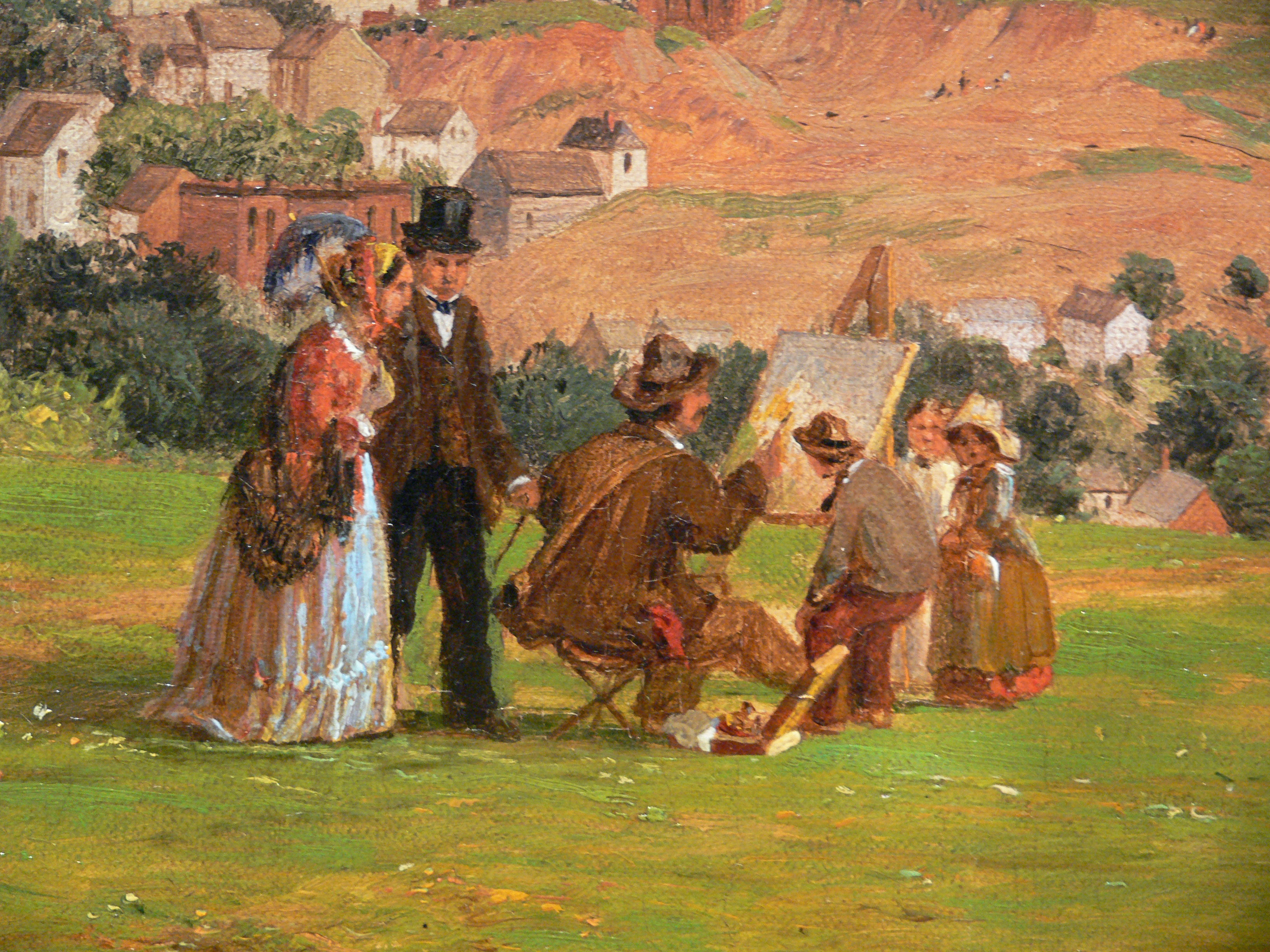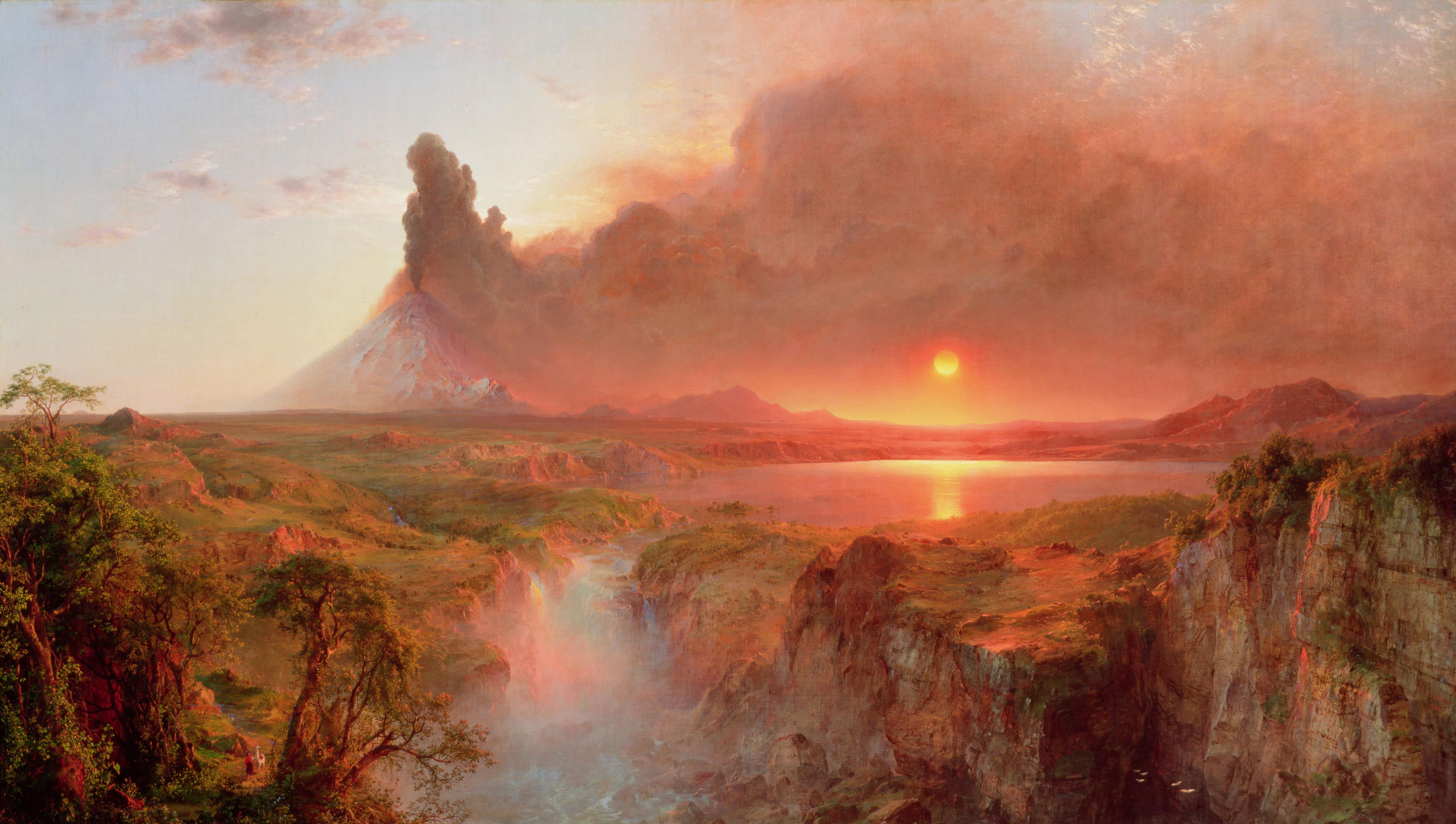|
Artists' Fund Society
The Artists' Fund Society of the City of New York was a benevolent society founded on February 5, 1859, to assist members and their families in cases of illness, old age, and death, and to provide aid to non-member artists in distress. It was incorporated on April 13, 1861. The society traces its origin to painter William Ranney's death in 1857, which left his wife and two children destitute. Painters from the New York City area contributed works to auction to aid his destitute family. The auction included paintings by George Inness, Jasper Francis Cropsey, Asher Brown Durand, and Frederick Church's "Morning in the Tropics," which sold for $625, at that time the highest amount ever paid at auction for a painting in the United States. The society began with 25 members who, from 1860 through 1889, were required to annually contribute a piece of art work to be exhibited and sold at auction. Its first organized exhibition was held starting on December 6, 1860, showing 44 pieces f ... [...More Info...] [...Related Items...] OR: [Wikipedia] [Google] [Baidu] |
William Ranney
William Tylee Ranney (May 9, 1813 – November 18, 1857) was a 19th-century American painter, known for his depictions of Western life, sporting scenery, historical subjects and portraiture. In his 20-year career, he made 150 paintings and 80 drawings, and is considered the first major genre painter to work in New Jersey, and one of the most important pre-Civil War American painters.Gerdts, Jr. William H. ''Painting and Sculpture in New Jersey'' The New Jersey Historical Series, Volume 24. 1964. D. Van Nostrand Company, Inc. Princeton, New Jersey; Pages 120 - 123Millan, Nicholas"Famed American 19th century painter called North Hudson home" '' The Union City Reporter''; March 16, 2008 His work is on display in several museums across the United States. One of his contemporaries opined, "A specimen of Ranney is indispensable wherever a collection of American art exists."Rosero, Jessica. "All-American painter," ''The Union City Reporter''; April 30, 2006; Pages 7 and 32 Early life Will ... [...More Info...] [...Related Items...] OR: [Wikipedia] [Google] [Baidu] |
George Inness
George Inness (May 1, 1825 – August 3, 1894) was a prominent American landscape painter. Now recognized as one of the most influential American artists of the nineteenth century, Inness was influenced by the Hudson River School at the start of his career. He also studied the Old Masters, and artists of the Barbizon school during later trips to Europe. There he was introduced to the theology of Emanuel Swedenborg, which was significant for him; he expressed that spiritualism in the works of his maturity (1879–1894). Although Inness's style evolved through distinct stages over a prolific career that spanned more than forty years and 1,000 paintings, his works consistently earned acclaim for their powerful, coordinated efforts to elicit depth of mood, atmosphere, and emotion. Neither pure realist nor impressionist, Inness was a transitional figure, He worked to combine both the earthly and the ethereal in order to capture the complete essence of a locale in his works. A ... [...More Info...] [...Related Items...] OR: [Wikipedia] [Google] [Baidu] |
Jasper Francis Cropsey
Jasper Francis Cropsey (February 18, 1823 – June 22, 1900) was an important American landscape artist of the Hudson River School. Early years Cropsey was born on his father Jacob Rezeau Cropsey's farm in Rossville on Staten Island, New York, the oldest of eight children. As a young boy, Cropsey had recurring periods of poor health. While absent from school, Cropsey taught himself to draw. His early drawings included architectural sketches and landscapes drawn on notepads and in the margins of his schoolbooks. Career Trained as an architect, he set up his own office in 1843. Cropsey studied watercolor and life drawing at the National Academy of Design under the instruction of Edward Maury and first exhibited there in 1844. A year later he was elected an associate member and turned exclusively to landscape painting; shortly after he was featured in an exhibition entitled "Italian Compositions". Cropsy traveled in Europe from 1847–1849, visiting England, France, Switzerland, ... [...More Info...] [...Related Items...] OR: [Wikipedia] [Google] [Baidu] |
Asher Brown Durand
Asher Brown Durand (August 21, 1796, – September 17, 1886) was an American painter of the Hudson River School. Early life Durand was born in, and eventually died in, Maplewood, New Jersey (then called Jefferson Village). He was the eighth of eleven children. Durand's father was a watchmaker and a silversmith. Durand was apprenticed to an engraver from 1812 to 1817 and later entered into a partnership with the owner of the company, Charles Cushing Wright (1796–1854), who asked him to manage the company's New York office. He engraved ''Declaration of Independence'' for John Trumbull during 1823, which established Durand's reputation as one of the country's finest engravers. Durand helped organize the New York Drawing Association in 1825, which would become the National Academy of Design; he would serve the organization as president from 1845 to 1861. Asher's engravings on bank notes were used as the portraits for America's first postage stamps, the 1847 series. ... [...More Info...] [...Related Items...] OR: [Wikipedia] [Google] [Baidu] |
Frederic Edwin Church
Frederic Edwin Church (May 4, 1826 – April 7, 1900) was an American landscape painter born in Hartford, Connecticut. He was a central figure in the Hudson River School of American landscape painters, best known for painting large landscapes, often depicting mountains, waterfalls, and sunsets. Church's paintings put an emphasis on realistic detail, dramatic light, and panoramic views. He debuted some of his major works in single-painting exhibitions to a paying and often enthralled audience in New York City. In his prime, he was one of the most famous painters in the United States. Biography Beginnings Frederic Edwin Church was a direct descendant of Richard Church, a Puritan pioneer from England who accompanied Thomas Hooker on the original journey through the wilderness from Massachusetts to what would become Hartford, Connecticut. Church was the son of Eliza (1796–1883) and Joseph Church (1793–1876). Frederic had two sisters and no surviving brothers. His father w ... [...More Info...] [...Related Items...] OR: [Wikipedia] [Google] [Baidu] |
National Academy Of Design
The National Academy of Design is an honorary association of American artists, founded in New York City in 1825 by Samuel Morse, Asher Durand, Thomas Cole, Martin E. Thompson, Charles Cushing Wright, Ithiel Town, and others "to promote the fine arts in America through instruction and exhibition." Membership is limited to 450 American artists and architects, who are elected by their peers on the basis of recognized excellence. History The original founders of the National Academy of Design were students of the American Academy of the Fine Arts. However, by 1825 the students of the American Academy felt a lack of support for teaching from the academy, its board composed of merchants, lawyers, and physicians, and from its unsympathetic president, the painter John Trumbull. Samuel Morse and other students set about forming "the drawing association", to meet several times each week for the study of the art of design. Still, the association was viewed as a dependent organizati ... [...More Info...] [...Related Items...] OR: [Wikipedia] [Google] [Baidu] |
Friendly Societies
A friendly society (sometimes called a benefit society, mutual aid society, benevolent society, fraternal organization or ROSCA) is a mutual association for the purposes of insurance, pensions, savings or cooperative banking. It is a mutual organization or benefit society composed of a body of people who join together for a common financial or social purpose. Before modern insurance and the welfare state, friendly societies provided financial and social services to individuals, often according to their religious, political, or trade affiliations. These societies are still widespread in many parts of the developing world, where they are referred to as ROSCAs (rotating savings and credit associations), ASCAs (accumulating savings and credit associations), burial societies, chit funds, etc. Character Before the development of large-scale government and employer health insurance and other financial services, friendly societies played an important part in many people's lives. ... [...More Info...] [...Related Items...] OR: [Wikipedia] [Google] [Baidu] |




.jpg)
